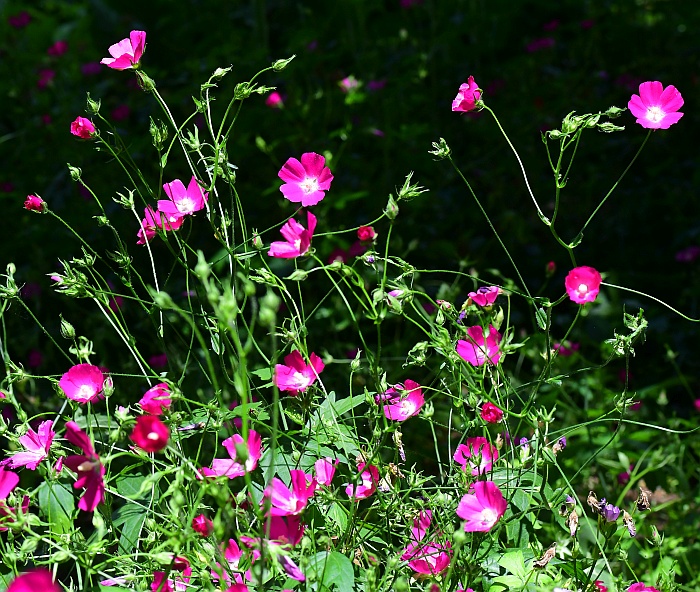Callirhoe bushii Fernald
Bush's Poppy Mallow

Native
CC = 9
CW = 5
MOC = 14
SRank = S1
© SRTurner
Callirhoe bushii FernaldBush's Poppy Mallow | |
 |
Native CC = 9 CW = 5 MOC = 14 SRank = S1 |
© SRTurner |
|
Family - Malvaceae Habit - Perennial forb, usually with a thickened, tuberous rootstock. Stems - Ascending, to 50 cm, pubescent with simple and sometimes some stellate hairs. Leaves - Simple, lobed, petiolate. Basal leaf petioles 10-23 cm long, pubescent with stellate hairs. Basal leaf blades 4-12 cm long, triangular-cordate to broadly ovate in outline, with 3-7 deep palmate lobes, these sometimes irregularly lobed again, relatively broad, the margins usually sparsely and coarsely toothed, the upper and lower surfaces pubescent with simple and occasionally also a few stellate hairs. Leaves of the aerial stems with the blades 3-12 cm long, broadly triangular to ovate-cordate or obovate in outline, with usually 3 deep palmate lobes, these often pinnately lobed again, the margins entire to sparsely and coarsely toothed, the upper and lower surfaces pubescent with simple and usually also stellate hairs. Stipules persistent, 9-15 mm long, ovate, sometimes auriculate.
Inflorescences - Racemes with 7-17 flowers.
Flowers - Bractlets subtending the calyx 8-14 mm long, linear to narrowly elliptic-lanceolate. Buds ovate to broadly ovate, the sepal tips valvate, forming a beaklike projection 6-10 mm long. Calyx closely subtended by 3 bractlets. Calyces 15-27 mm long, the outer surface densely pubescent with simple hairs and sometimes also with sparse 4-rayed stellate hairs near the tip, the lobes 10-17 mm long, lanceolate to narrowly lanceolate. Petals 17-32 mm long, pale rose to more commonly wine red or purplish red. Pistils with 9-23 locules, the carpels arranged in a loose flattened ring. Styles fused most of their length, each branch with a single linear stigmatic area along the inner side toward the tip.
Fruit - Schizocarps 9-13 mm in diameter, with 16-23 mericarps. Mericarps indehiscent, 4.0-5.5 mm long, the dorsal surface glabrous, the sides of the fertile portion with a reticulate pattern of thickenings, separated from the inconspicuous sterile portion by a well-developed collar. Seeds 2-3 mm long, kidney-shaped, black or less commonly dark brown.
Flowering - May - August Habitat - Forests, prairies, calcareous glades, roadsides, road cuts, railroads, pastures, open disturbed areas. Sometimes cultivated. Origin - Native to the U.S. Lookalikes - Callirhoe involucrata, Callirhoe digitata. Other info. - This beautiful species is found in a few central and southwestern counties of Missouri, also ranging south and west into Arkansas, Oklahoma, and Kansas. It is not common anywhere, and in fact carries an S1 (critically imperiled) conservation ranking in Missouri. When flowering, it is conspicuous from its richly-colored flowers, which are borne on generally upright plants. The leaves are relatively broadly lobed. It strongly resembles its sibling C. involucrata, except for the latter's more prostrate habit, sepals with more prominent nerves, divergent sepal tips on the buds, and few if any stellate hairs on basal leaves. This attractive species is deserving of more frequent cultivation. The photos above were taking in a garden setting. The plants are rarely seen in such abundance in the wild. Photographs taken at Shaw Nature Reserve, Franklin County, MO, 6-10-2024 (SRTurner). |